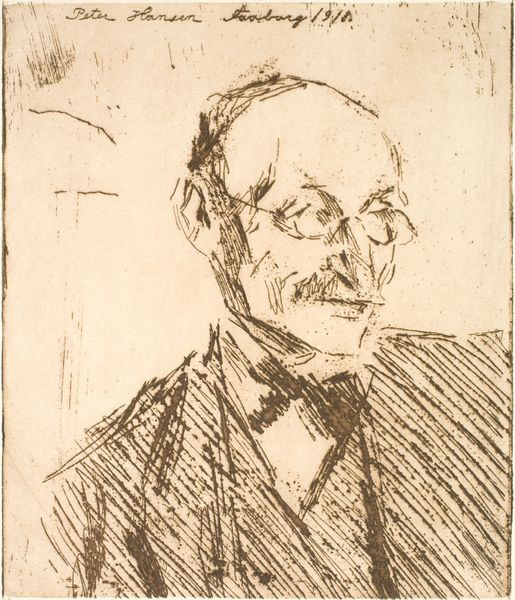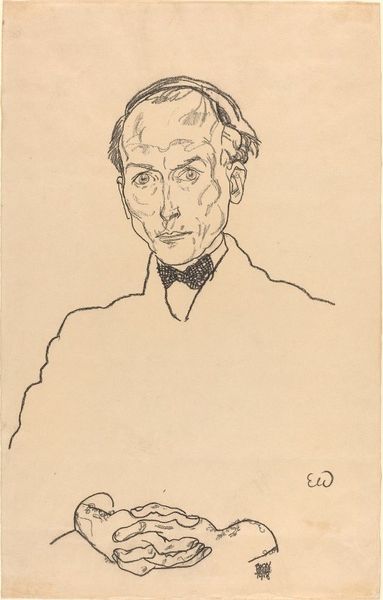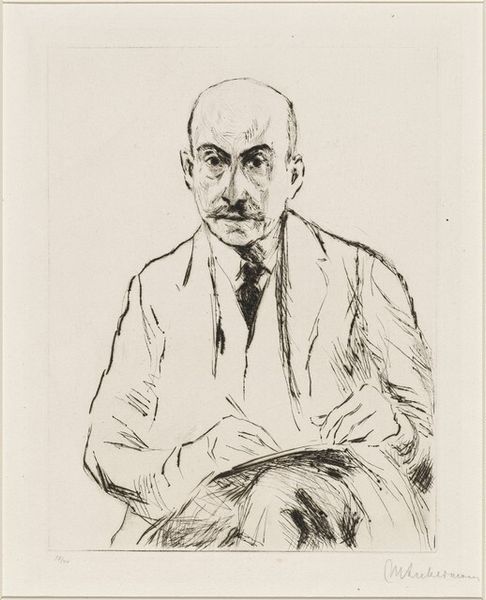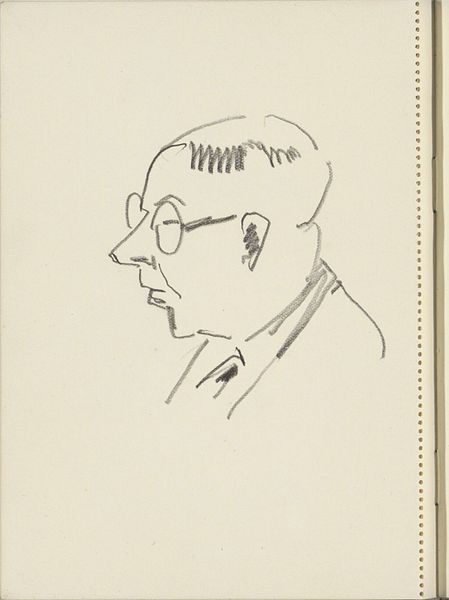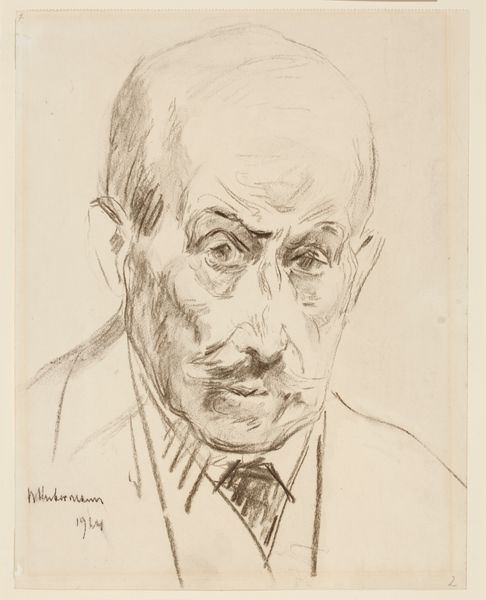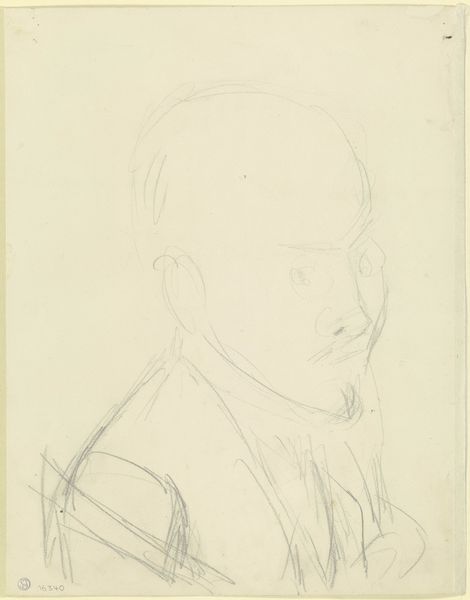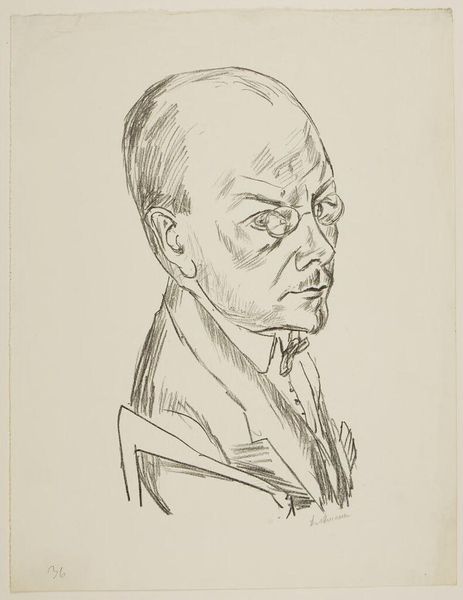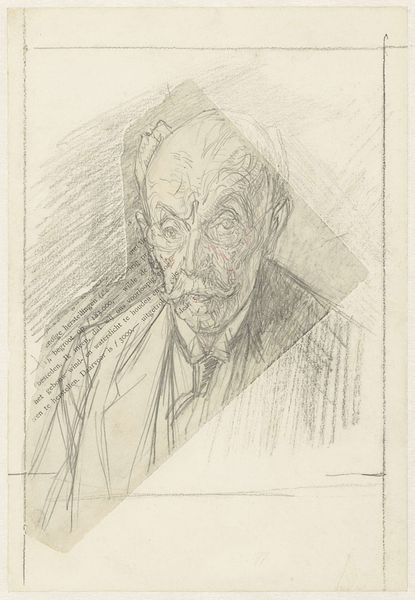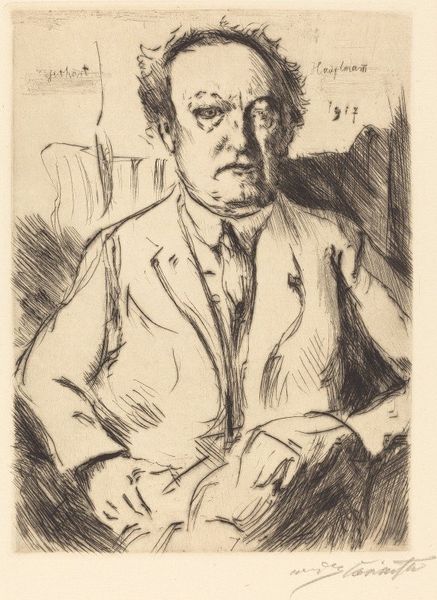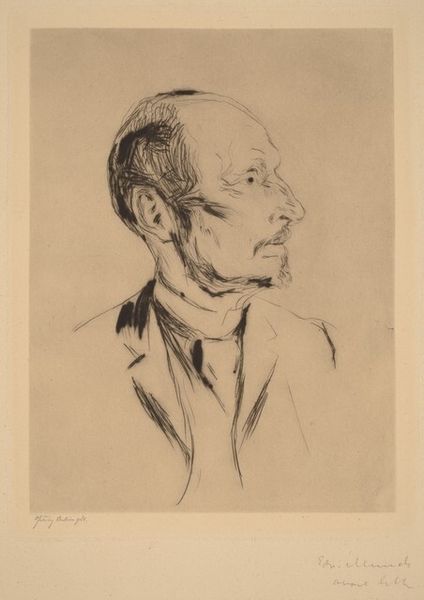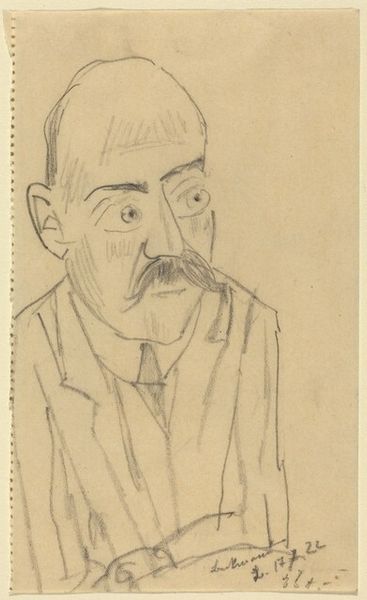
Geografen, Professor G. Hatt. Brystbillede en face. 1935
0:00
0:00
drawing, pencil
#
portrait
#
pencil drawn
#
drawing
#
facial expression drawing
#
light pencil work
#
pencil sketch
#
caricature
#
portrait reference
#
pencil drawing
#
pencil
#
animal drawing portrait
#
portrait drawing
#
portrait art
#
modernism
#
realism
Dimensions: 413 mm (height) x 335 mm (width) (bladmaal)
Editor: This is "Geografen, Professor G. Hatt. Brystbillede en face." a pencil drawing by John Christensen from 1935, currently held at the SMK. The lines are delicate, almost hesitant, giving it a rather introspective mood. How do you interpret this work? Curator: This drawing, to me, speaks volumes about the intellectual climate of the 1930s. Christensen's choice to depict a geographer using such a raw medium - simple pencil - invites us to consider the relationship between scientific observation and artistic expression. Given that this was during a period marked by growing political instability and social change, what do you think the choice of such an intimate, almost vulnerable, depiction of a professor might signify? Editor: Perhaps a commentary on the individual amidst larger societal shifts? A focusing on the human element in a time of turmoil? Curator: Precisely. Think about the role of intellectuals like Professor Hatt during this time. Geography, then as now, involved navigating complex geopolitical landscapes. By presenting him in such a personal light, Christensen might be subtly questioning the authority, or perhaps even the limitations, of academic knowledge in the face of real-world events. Editor: That's a fascinating perspective. I initially saw it as just a simple portrait, but framing it within its historical context adds layers of meaning. It becomes less about the individual and more about the social and political environment they inhabited. Curator: Absolutely. And by engaging with these layers, we can start to unpack the complex dialogues between art, identity, and power that were shaping the world then – and continue to shape it today. Editor: I’ll definitely look at portraiture differently now! Thanks for sharing your insight.
Comments
No comments
Be the first to comment and join the conversation on the ultimate creative platform.

